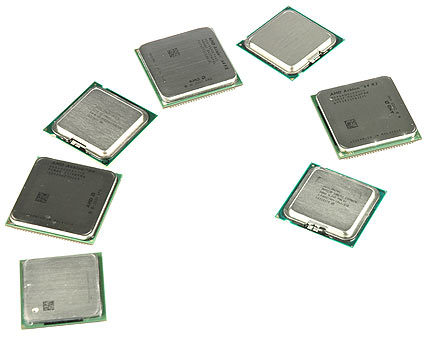The Gigahertz Battle: How Do Today's CPUs Stack Up?
Conclusion
We briefly talked about the four different platforms and seven processors we used for our performance-per-clock analysis, but the benchmark results eventually speak for themselves. It would have been great to include Pentium 4 and Pentium D processors for socket 775, but it would have only been possible to reach a 2.4 GHz core clock speed at very limited FSB speeds. This, of course, would not have reflected real-life performance in any way. So, we have the Pentium 4 senior for socket 478, an Athlon 64 for socket 939, Athlon 64 X2 processors for socket 939 and socket AMD, and the full Core 2 processor lineup with two and four processing cores.
Our benchmark results show how powerful the Core 2 processors and the Athlon 64 X2 CPUs really are - or how far behind the old 2.4 GHz Pentium 4 actually is. When compared to the Athlon 64 4000+ single core, the AMD processor offers up to 50% more performance, showing that the AMD64 architecture is far superior to Intel's NetBurst.
As we also have a look at the dual- and quad-core processors, it becomes so obvious that thread-optimized applications such as 3DStudio Max or Photoshop CS2 benefit tremendously from core count increases. The Pentium 4 took 5:16 to render our reference scene, Core 2 Duo only needed 1:38 and the Core 2 Quad only needs 54 seconds for the same task - an all of these results were achieved at 2.4 GHz.
But our benchmark results also prove that many applications still aren't optimized for more than two processing cores. Audio and video encoding workloads or iTunes especially cannot take advantage of the two additional cores. The chess benchmark Deep Fritz, Photoshop CS2 and 3DStudio Max, however, can.
Whether we're talking about one, two, four or more cores, clock speed is a good way to increase CPU performance. But it doesn't replace an efficient multi-core architecture. I'll be excited to see AMD's first quad-core processor later this year, and we really hope that the software industry moves quickly enough to take advantage of the upcoming performance potential.
Join our discussion on this topic
Get Tom's Hardware's best news and in-depth reviews, straight to your inbox.
